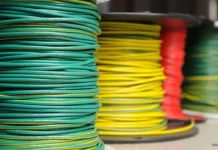Are you tired of being constantly left in the dark because of power outages?
Or are worrying that important appliances you rely on to do your job will get disrupted? We all take power for granted, but not having access can be very disruptive. In some cases, it can even be dangerous.
So what can you do to adapt to these blackouts? The first thing you need to do is to know what they are.
Read on for our guide to rolling blackouts and power disruptions.
What Is a Rolling Blackout?
A rolling blackout is an intentional, temporary power outage. The electric supply gets turned off for non-overlapping periods. The goal of a rolling blackout is to reduce the overall demand on the electrical grid.
Rolling blackouts are a last resort when demand outpaces supply and there is a risk of overloading the grid. All this can cause a widespread power outage. These happen during heat waves when air conditioners put a strain on the electric grid.
In a rolling blackout, each area is without power for a set period before power gets restored. The process then repeats in a different area. This rotational load shedding schedule can last for several days until demand on the grid decreases.
How Rolling Blackouts Work
Rolling blackouts work by rotating power outages among customers in different areas. They last for one to two hours at a time. This is until demand gets to a level that the electric grid can handle.
Utilities start by identifying which areas of the grid are vulnerable to overloading. Then, they work with local officials to determine which areas they should include.
Customers in the affected areas are then notified of the outage in advance. Utilities make every effort to cut the number of outages and the length of time each customer is without power.
Rolling blackouts are an inconvenience. But, they are often necessary to avoid widespread power outages. These outages could last for days or even weeks.
Why Prepare for a Blackout?
There are many reasons to prepare for a blackout. One is that power outages can last for days or even weeks. If you are prepared with food and water, you will be able to survive a blackout.
Also, blackouts can be dangerous. If you have a medical condition that requires electricity, you could be at risk if there is a blackout. Preparing for a blackout is the best way to protect yourself and your family.
How Can You Prepare for a Rolling Blackout?
If you live in an area that is prone to this type of blackout, it’s important to have a plan in place so that you can stay safe. Below are some tips on how to prepare for a rolling blackout.
Stock up on Essentials
In the event of a rolling blackout, it is important to stock up on essentials. Make sure that you have everything you need to get through the power outage.
Keep in mind that a rolling blackout can last for several hours. This means you will need to have food and water on hand.
If you have infants or small children, you will need to have extra baby food or formula on hand. It is also important to have a first aid kit in case of any accidents.
Have a Flashlight and Batteries Handy
When a rolling blackout occurs, be sure to have a flashlight and batteries handy. This will help you navigate in the dark. At the very least, have some candles and matches set aside.
Also, be sure to Charge your cellphone battery in advance. This is in case you need to call for help. Mobile phones can also be an alternative source of light in case flashlights or candles are not available.
Buy a Battery-Operated Radio
When the power goes out, a battery-operated radio can be a lifesaver. It is portable and you can use it in a pinch to stay informed and entertained.
They are also relatively inexpensive. This makes them a great investment for anyone who lives in an area prone to rolling blackouts.
Protect Appliances
There are many things you can do to protect your appliances. One is to unplug all appliances and electronics. This will help prevent damage from power surges.
If you have a gas stove, turn off the gas at the main valve. This will prevent a fire if the power goes out while the stove is in use.
If you have a well, you will need to turn off the pump to prevent it from burning out. By taking these precautions, you can help protect your appliances and home during a rolling blackout.
Find Out Why Your Power Is Out and Report It
If you lose power during a rolling blackout, it’s important to find out why your power is out and report it. Check your circuit breakers to see if one has been tripped.
If so, reset it and see if your power comes back on. If your power is still out, call your power company to report the outage.
How Can I Help Prevent Rolling Blackouts?
While it is impossible to directly prevent rolling blackouts, there are things you can do to help. One is by performing energy-demanding tasks during off-peak hours. This will help reduce the strain on the grid during times of peak demand.
Peak demand periods are typically between 3 and 7 pm. If you can shift your energy use to earlier or later in the day, it can help reduce the likelihood of blackouts.
You should also consider investing in solar power. With solar power, you generate your electricity and are not reliant on the grid. This can help during times of high demand when the grid is strained.
Solar power is a renewable resource, so you’ll be doing your part to help the environment as well. Check companies like https://blueravensolar.com/arizona/the-phoenix-solar-installation-experts/ to get more information.
Preparing for Rolling Blackouts
Rolling blackouts are a reality for many homeowners, but there are ways to prepare for and manage them. By following the tips in this guide, homeowners can minimize the disruption and make the best of a difficult situation.
For more insightful articles about managing power usage, check out the rest of our blog today!

































